Title : Spiny Lobster aquaculture – from aspiration to production
Abstract:
There are several high value marine species that until recently have only been available for harvest as a fishery product. A growing world middle-class is driving increased demand for premium seafood products. To meet market demand an integrated multidisciplinary approach is required to translate aquaculture aspiration into production in difficult to culture marine species. A typical example of singular research vs a coordinated multidisciplinary approach is evident with a longitudinal examination of spiny lobster propagation research. The development of commercial spiny lobster propagation commenced in 1898 in Japan, over the proceeding century rudimentary benchtop culture was established for several species, this was achieved by several institutes across the world, particularly in Japan. The research primarily had a singular focus on particular aspects of culture, such as nutrition, health or biology. However, this approach failed to take spiny lobster culture to a commercial phase. In Australia, over the past two decades a coordinated approach to spiny lobster propagation has been undertaken, firstly through a grouping of research institutes focused on spiny lobster research, and then later expanding the capacity at the University of Tasmania’s, Institute for Marine and Antarctic Studies (IMAS). This has resulted in spiny lobster aquaculture moving to a pre-commercial footing. This transition has been achieved through an integrated approach to spiny lobster biology, physiology, behaviour, husbandry and nutritional requirements, examination of the environment of their aquatic systems and factors that assist to integrate these such as advanced engineering, AI and genetics. When developing a new aquaculture species, factors such as industry input, operating at commercial scale, sustainability and social science are of equal importance to achieving successful outcomes (Fig. 1). The research was driven through a large multidisciplinary research program that integrated findings simultaneously achieving outcomes by coordination and implementation of findings in a team environment with a singular focus.
Audience Take Away Notes:
- The development of spiny lobster aquaculture as a new industry.
- Consider better ways to collaborate to achieve a common goal.
- Establish new collaborations and partnerships
- This project has established a crustacean transcriptome database (Crusty base) to assist in assessing
- gene function, freely accessible, more material added by users.
- The use of Crusty base dramatically reduces time spent on looking at gene functions in crustaceans.
- The benefits of diverse research teams to solve complex problems.
- Potential for some of the technology to be used for other difficult to rear species.
- Ability for AI to be used in the aquaculture of high value species.
- The commercial challenges of developing a new aquaculture species.



